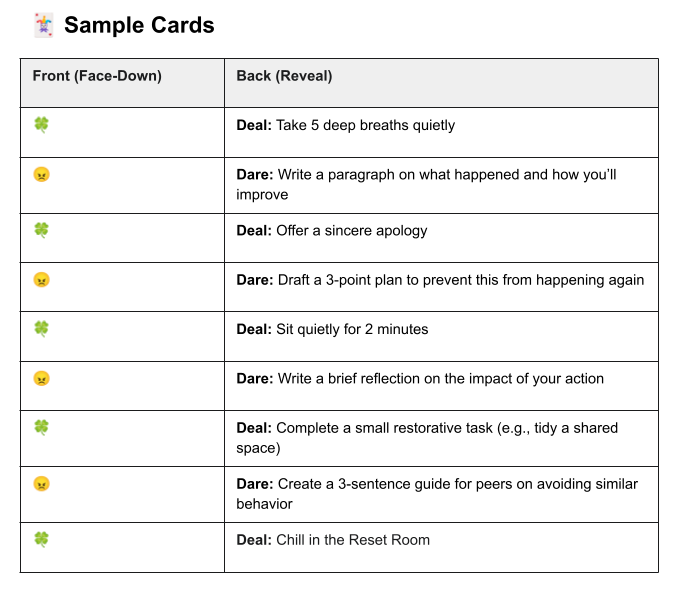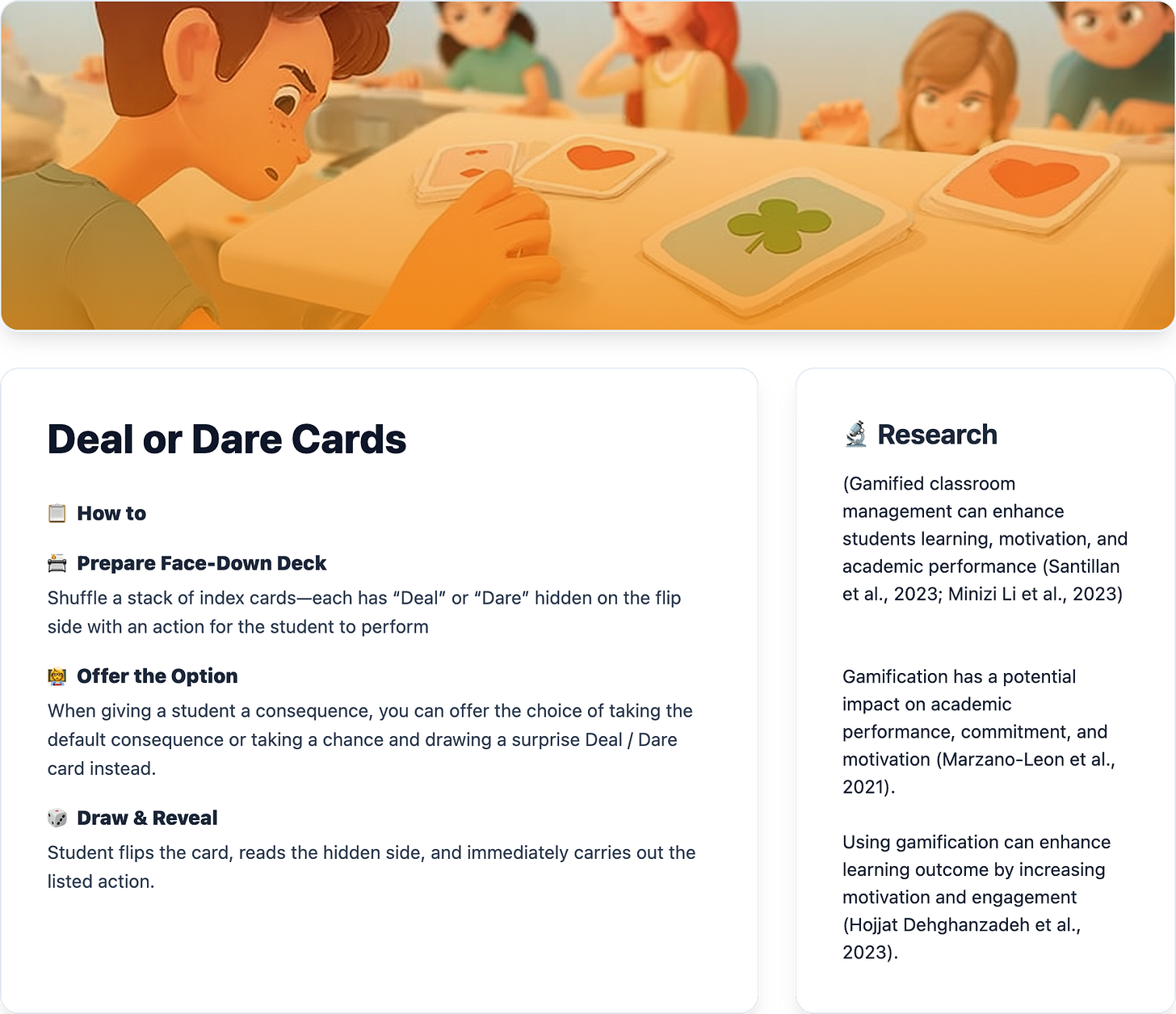Responding to Defiance
A 6-step process to regulate, respond, and reset!

We’ve all been there. You give a simple direction. One student crosses their arms, stares you down, and says, “No.”
The air shifts.
The class goes quiet.
❤️🔥 Your heart pounds and your pulse spikes.
In that instant, the lesson stops and the power struggle begins.
Why This Moment Hits So Hard
It’s not just about the defiance. It’s about respect, authority, and control; all unfolding in front of 25 other pairs of eyes.
When students refuse, teachers feel it deep in the nervous system. Heart rate rises. Muscles tense. Your brain interprets the behavior as a threat.
The student’s brain does the same. Both bodies prepare for battle. 🌪️ No wonder these moments spiral so quickly.
First Things First
It always starts with you. How you respond will shape how the challenge plays out.
When you stay calm, the student stays calm. When you become authoritative or confrontational, the student mirrors that energy.
The old adage still holds true here: you cannot control how others behave, but you can choose how you respond.
The first move seems simple, but when strong emotions are at play, it can be hard to remember. Take a calming breath so you can think.
The Defiance Reset Framework
🤯 Here’s what to do when a student says “NO”
1. Pause Before You React
When defiance shows up, your own brain lights up too. Heart rate jumps. Muscles tighten. Before saying a word, take one slow breath. That single pause quiets your body’s alarm system and gives your thinking brain a chance to lead.
2. Look Beneath the “No”
Every refusal has a reason. For example, the student may feel embarrassed, powerless, or unheard. You are not excusing the behavior; you are reading the signal beneath the behavior to apply a more individualized consequence.
3. Stay Steady, Don’t Escalate
Lower your tone. Keep your posture relaxed. When you stay steady, the student’s nervous system begins to regulate and the brain’s defense mechanisms stand down, impacting not only the student but the entire class. You model calm instead of control, and regulation instead of reaction.
4. Offer Options for Getting Back
Gauge the needs of your students and the impact of the disruption.
Consider both the individual student and the classroom as a whole.
Provide time to regroup with a calming breath.
If needed, invite the student to use the Reset Space.
If a consequence is appropriate, use Deal or Dare Cards.
Choice re-engages thinking and quiets the emotional brain.
5. Discuss Later, Not Publicly
After calm returns, circle back privately. A quiet check-in builds trust and keeps your authority intact. It tells the student; we can recover and move forward.
6. Reframe for Tomorrow
The next time you face defiance, approach with a plan. Calm your brain with a breath and remind yourself, This isn’t about me. It’s about brain state. Those two reminders help you stay grounded, curious, and in control.
A Classroom Management Strategy for Dealing with Defiance
Once you have applied the framework and the challenging behavior has been addressed, the next step is the consequence. This moment matters. It is where accountability and learning meet.
One option is Deal or Dare Cards.
Research supports the use of gamification as an effective classroom management tool. Offers students a choice, which increases motivation, engagement, and positive behavior.

The BrainZone Connection
When a student says no, the amygdala fires and floods the brain and body with emotion. In that moment, the student enters the Red Zone, and the ability to think and respond rationally goes out the window.
If we respond from our own Red Zone, escalation follows. When we pause, breathe, and stay calm, the Blue Zone begins releasing calming chemicals and restoring control. Once the threat is gone, and the brain has relaxed, the prefrontal cortex gets back online and reasoning and learning can resume.
💡A Shot in the Dark
Teaching without understanding the brain is a major handicap. It is like trying to navigate a dark room without light or familiarity. Every step is a guess, and every day brings stress and uncertainty, leaving us in a reactive state where fear and anxiety shape our teaching decisions.
BrainZones provides the light that helps teachers see inside the human brain and understand what drives behavior and learning. These insights empower educators to respond with clarity, create emotionally safe classrooms, and guide students toward genuine engagement and growth.
Thanks for reading our weekly post,
Debbie and the BZ Team
If you know someone struggling with behavior, please share
Find these strategies and more, in BrainZones’ Strategy Library. With AI personalization, and strategies for every occasion. Whether you are introducing new content, deepening understanding, or building self-regulation skills, let BZ help you engage and motivate your students.
Additional articles you may enjoy
🫨 Does the Chit Chat Ever End
😌 Mindfulness: The First Few Minutes
🧠 A Student’s Brain In The Classroom




